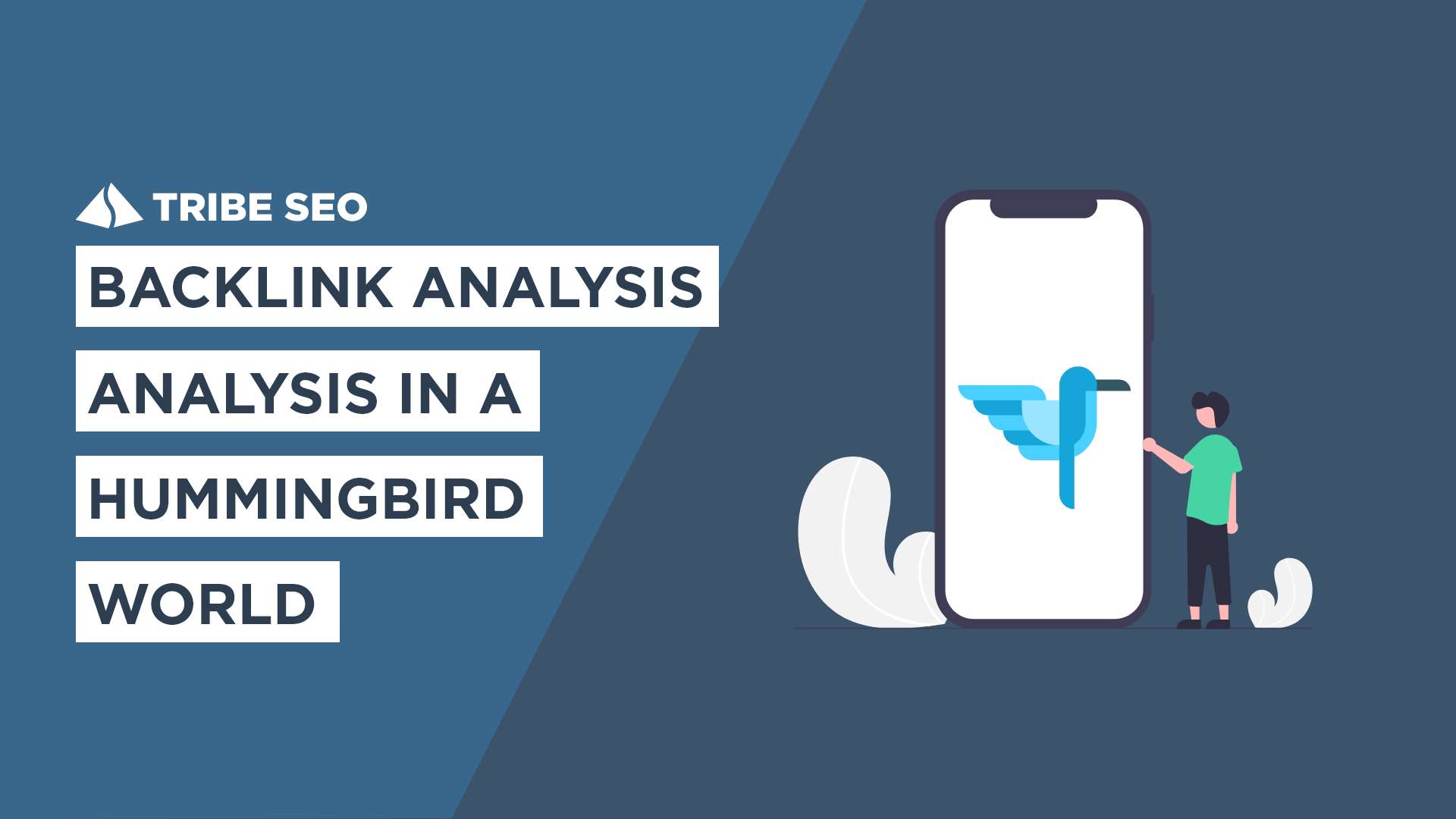
Google keeps evolving … which means your SEO needs to keep evolving too.
For example, are you doing backlink analysis like this:
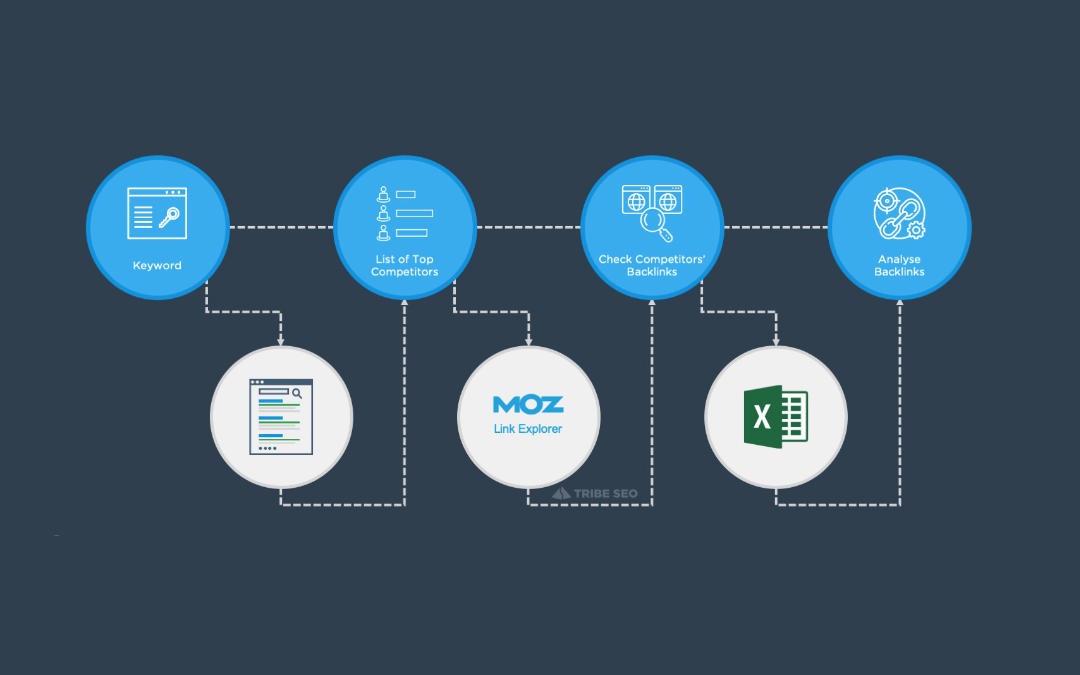
If so, you may be in need of a change but first, let’s review how Google’s evolved over the past seven years.
In 2012, Google announced the introduction of its Knowledge Graph into its search results.
When launched, Google described it as:
A “graph”—that understands real-world entities and their relationships to one another: things, not strings.
Google added that the Knowledge Graph helps users in three key ways:
For example, here’s the Knowledge Graph result for the search “greatest all time football player”:
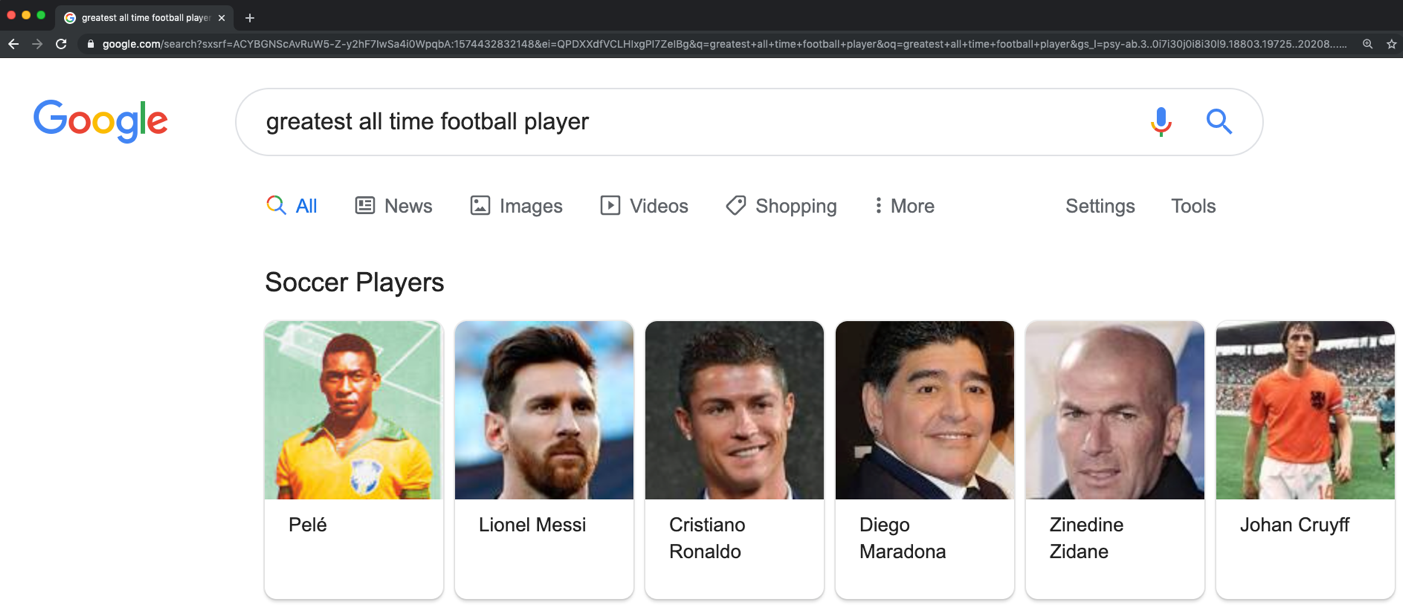
If you follow football (soccer), you can’t argue with the list although I’d have Messi first! The Knowledge Graph intelligently connects well known entities together, so Google can provide better results.
In 2013, Google unveiled its new Hummingbird algorithm, which is still its main search algorithm today. Hummingbird’s name came from what Google wanted to prioritize – being “precise and fast”.
And being more powerful than the previous Google algorithm, Hummingbird understood natural language better. It could understand the meaning behind the user’s words, considering the context of the words rather than just trying to match individual words in a query to words on a webpage.
Hummingbird also became the foundation for Google to build more intelligent future algorithms.
Google’s first artificial intelligence (AI) addition to the Hummingbird algorithm, in 2015, was RankBrain. This machine-learning system fed back information to Google to make its results better and without human intervention.
While there are hundreds of different “ranking signals” that Google uses to rank pages in response to a user’s query, RankBrain is significant because it’s one of the top three factors that Google uses (we’ll come to the other two in a moment).
RankBrain converts specific keyword searches into known topics to find pages that may not contain the exact words that were searched for.
The next artificial intelligence algorithm, in 2019, was BERT, which stands for “Bidirectional Encoder Representations from Transformers”.
This was an extension of RankBrain – rather than being focused on long tail keywords and on user satisfaction (is the user getting what they need?), it’s more subtle. Google is getting better at some of the finer details of how we use natural language.
The word “Transformers” in the BERT acronym refers to, as Google explains, “models that process words in relation to all the other words in a sentence, rather than one-by-one in order.”
Throughout these changes, Google has been increasingly getting better at natural language, and at understanding topics and the relationships between those topics. This means it can increasingly provide users with more useful and relevant results, through AI.
Google’s goal has always been to provide the most useful and relevant results to their users.
To do this, it uses (at least) 200 different ranking factors – but Google has described the top three ranking factors as content, links and RankBrain.
Before the Hummingbird algorithm came into play, staying relevant was often a case of being the best keyword optimized result.
Now, it’s much more than that. Relevance today is about being the most useful result.
You need to create content that solves the problem a user is having or that answers the question they were asking.
When Hummingbird and RankBrain combine, they’re increasingly getting better at working out whether a searcher is satisfied with the results they get – and pages that provide high levels of user satisfaction will rank more highly.
But what about staying relevant through links?
Back in 2014, Google’s Matt Cutts dispelled the misconception that PageRank is a measure of popularity (where people go), explaining that it was more to do with reputation (where people link).
Interestingly, Matt added that Google now looks at PageRank in a more topical way, which fits in with where Google is heading in general. So, if you’re an authority on a topic, and being linked from other topical pages on the internet, Google will take note of that.
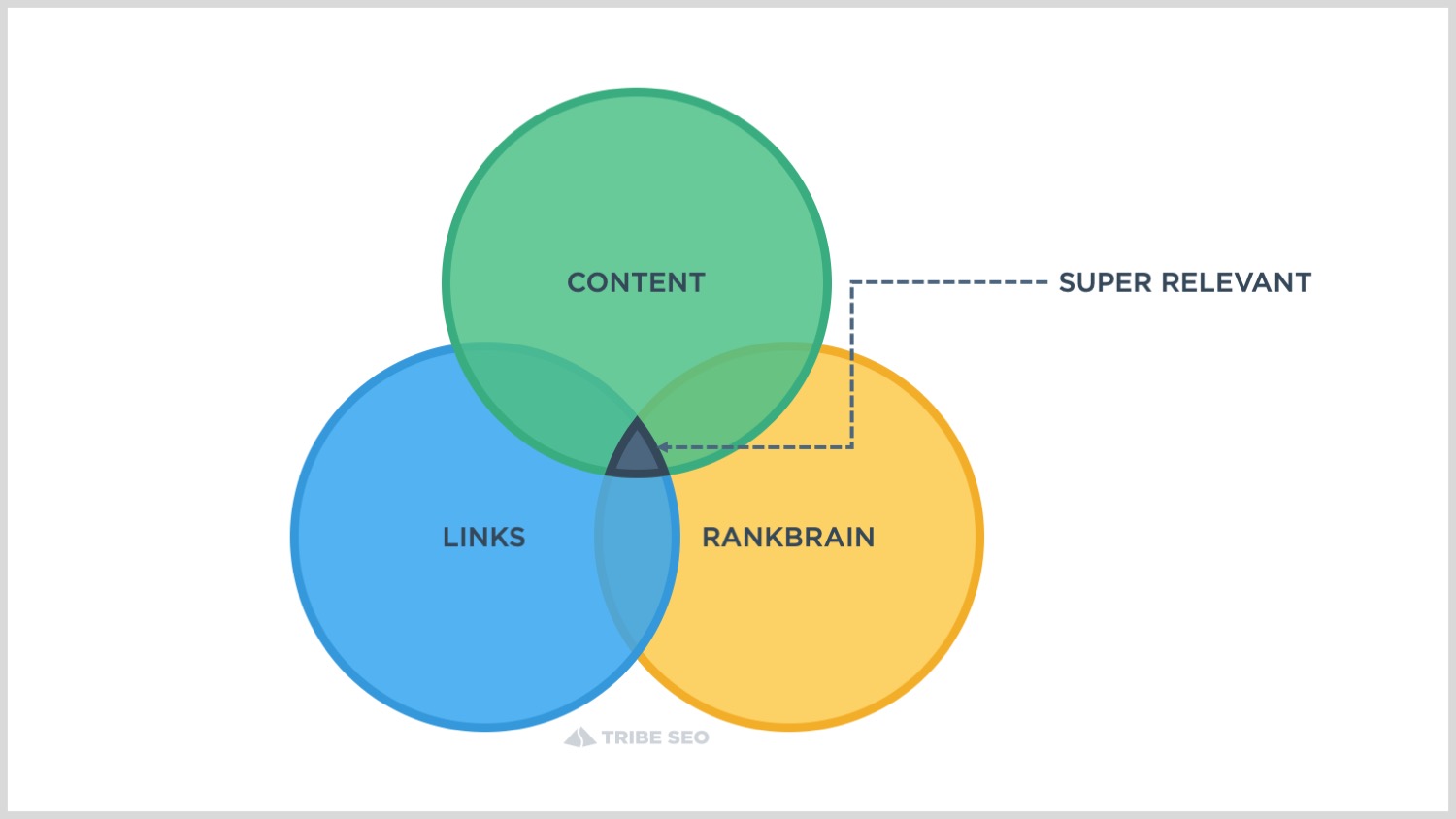
So to be “super relevant” in today’s world, your content needs high levels of user satisfaction (RankBrain) and relevant links (Topical PageRank). Topical PageRank isn’t talked about as much, but the relevancy of your links can have a significant effect on how relevant your content is perceived to be.
If you’re using a backlink analysis tool like Moz’s Link Explorer, it pays to think in topics and how those topics relate to each other: don’t just think about the domain authority of the site you’re hoping to get a link from.
Back in 2016, Google open-sourced some machine learning code. It uses a wide and deep learning model to better understand how topics related to each other. While I’m not a coder, it made me think how this “wide and deep” approach could apply to backlink analysis too.
When we think of the typical backlink analysis approach, it looks something like this:
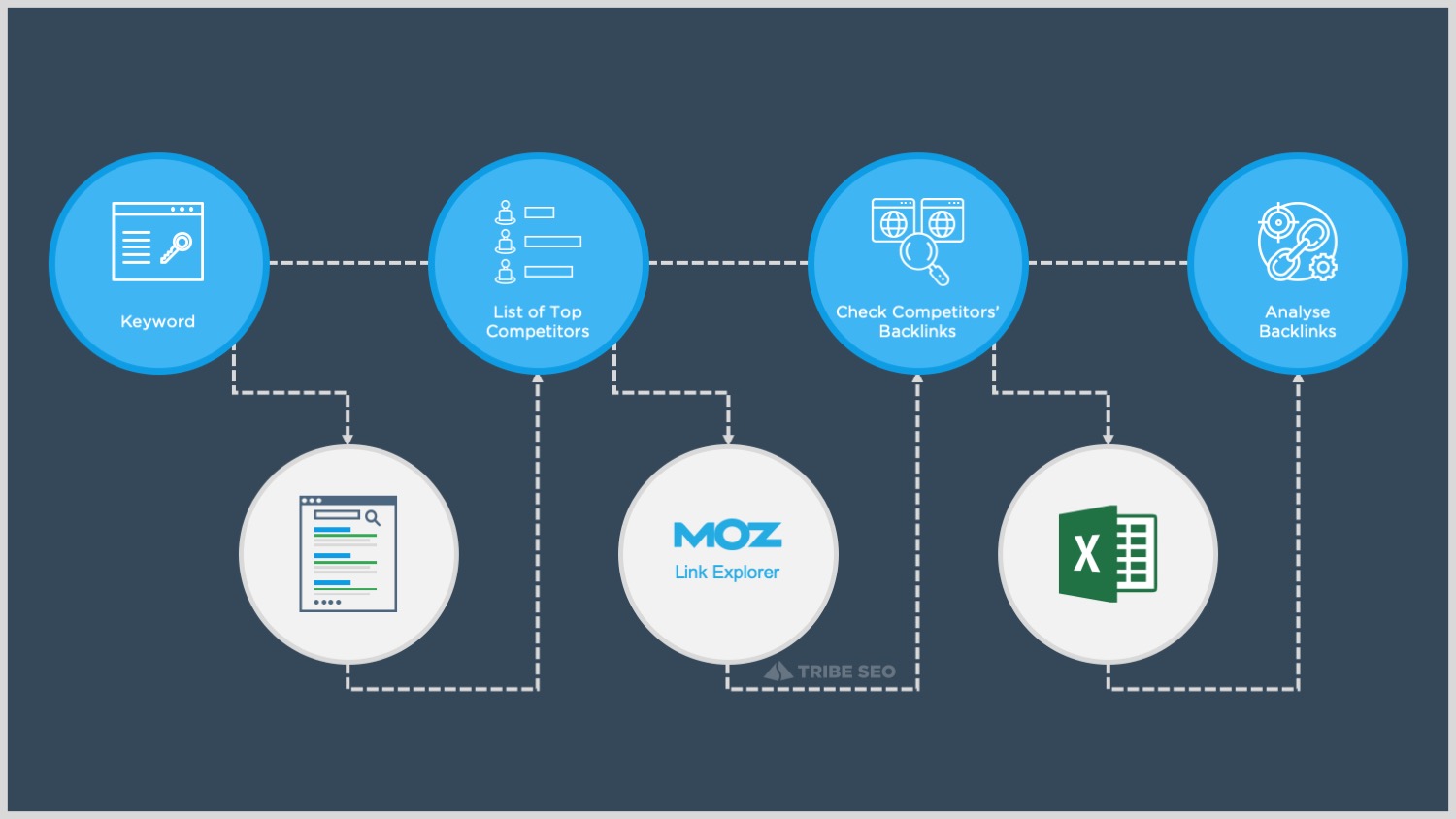
Step #1: You start with a keyword you’d like to rank for.
Step #2: Next, you list the top competitors who rank on Google for the keyword.
Step #3: After that, you’ll run each of those competitors’ websites through a backlink analysis tool.
Step #4: You export the backlink data into a spreadsheet and look for insights. You might be hoping to figure out particular strategies those competitors are using – or you might even want to replicate some of their backlinks.
Now, this isn’t a bad strategy. It works well, especially if you’re just getting started with building backlinks or you’re in a hurry … but it does have drawbacks.
If you start with one keyword or one topic, your results will be fairly limited. The backlink opportunities you find will be the same ones found by the competitors you are trying to overtake (and others researching them). Chances are, you’ll end up having to do it all again in three or four months and get similar results.
Instead, to make the most of your backlinks research, it’s better to think like Google and take a more topical approach. You can do this by going deep and by going wide: we’re now going to take a look at each of those.
Joseph Michael’s Four-Deep Technique is about niching down (or up) on a topic.
If your initial topic is “ski”, that’s a “fat head” keyword … and probably too broad and competitive for you to find any decent backlink insights.
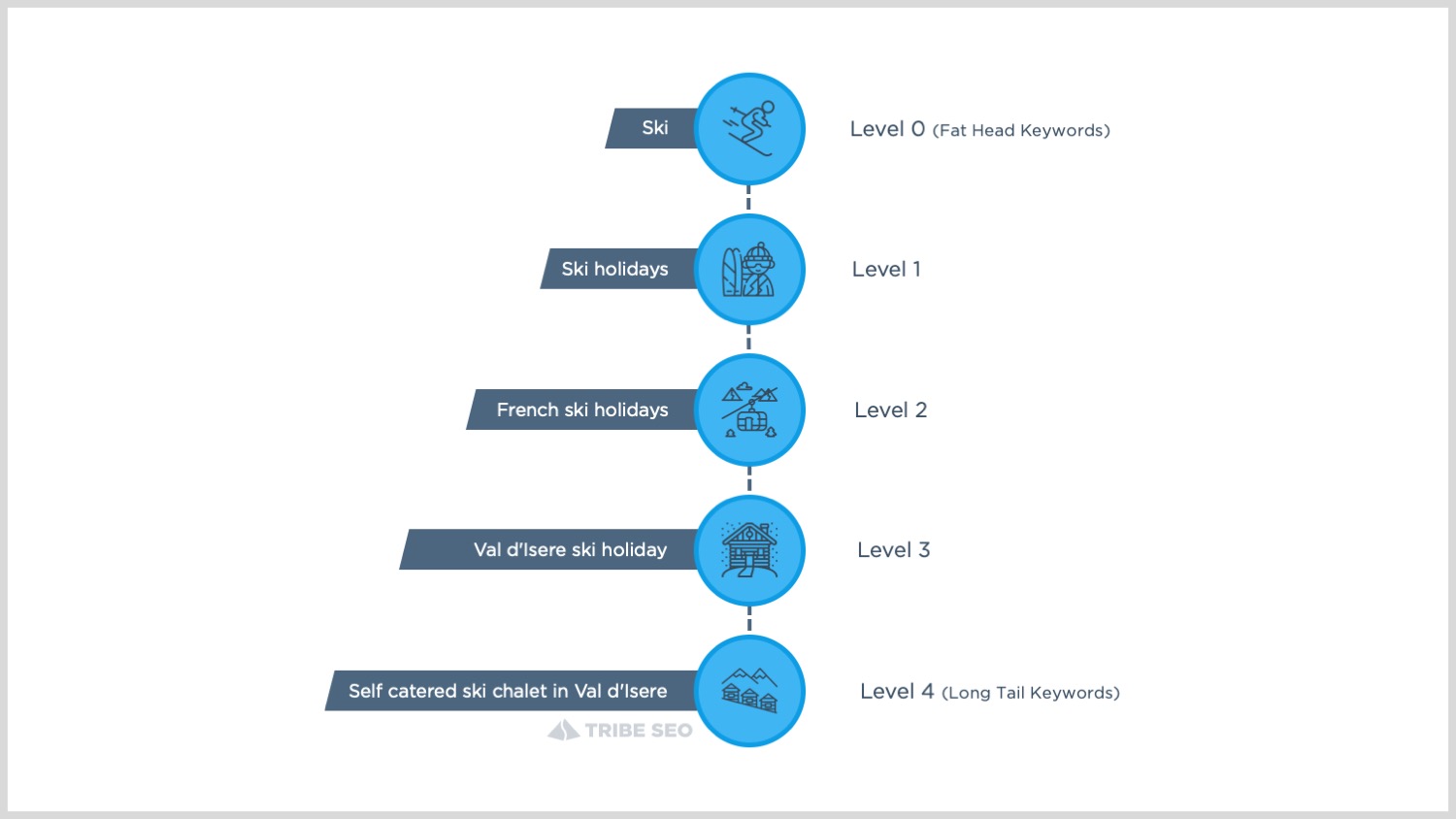
If you go down a level, you have “ski holidays” which is better – but still very competitive. It’s a “trophy” keyword that loads of competitors will have researched and optimized for already.
Instead, if you niche down to “French ski holidays” (Level 2), or down further to “Val d’Isere ski holiday” (Level 3) or even further to “Self catered ski chalet in Val d’Isere” (Level 4), you’ll find that when you use your backlink analysis tool the results will be more varied but still relevant. This is a great way to find backlink opportunities you might otherwise have missed—and differentiating your backlink profile from the competition.
Once you’ve tried the four-deep technique, you can extend this approach by going “one-wide.”
Here’s how that could look for the Level 2 keyword from above, “French ski holidays”:
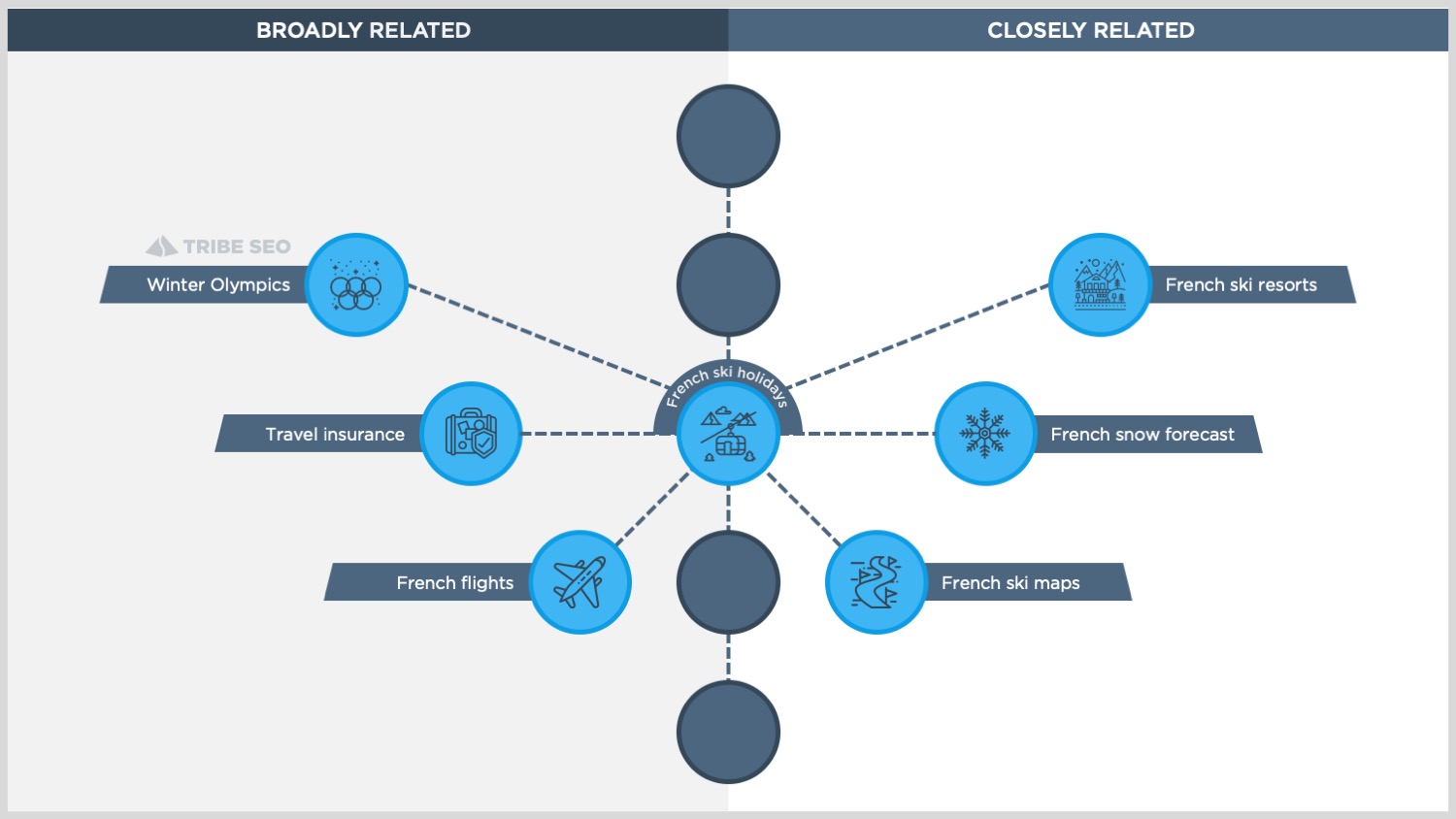
With this model, you’re looking for topics similar to your keyword – which might require some lateral thinking.
I recommend that you:
Start with Closely Related Topics
On the right of the diagram, we have “closely related” keywords. These are highly relevant to your keyword, so you’ll want to research them.
These links will benefit you the most because they’re going to add to your overall relevancy and your topical PageRank … but they’re not the whole story.
Then Try Broadly Related Topics
On the left of the diagram are “broadly related” keywords. Even if your ski holiday business wouldn’t ever aim to rank for keywords like “Winter Olympics”, “Travel Insurance” and “French Flights”, these keywords could still be useful.
They’re a good place to start when you’re performing backlink analysis – as you may well discover some high-quality backlinks that are relevant enough to benefit your site too. That’s because there’s a connection between them and your topic, so there’ll likely be an overlap of backlinks opportunities.
When you combine the four-deep and one-wide technique, you’ll have endless opportunities to find topical backlinks … which will help your content to stay relevant and to rank better.
Here’s how that could look:
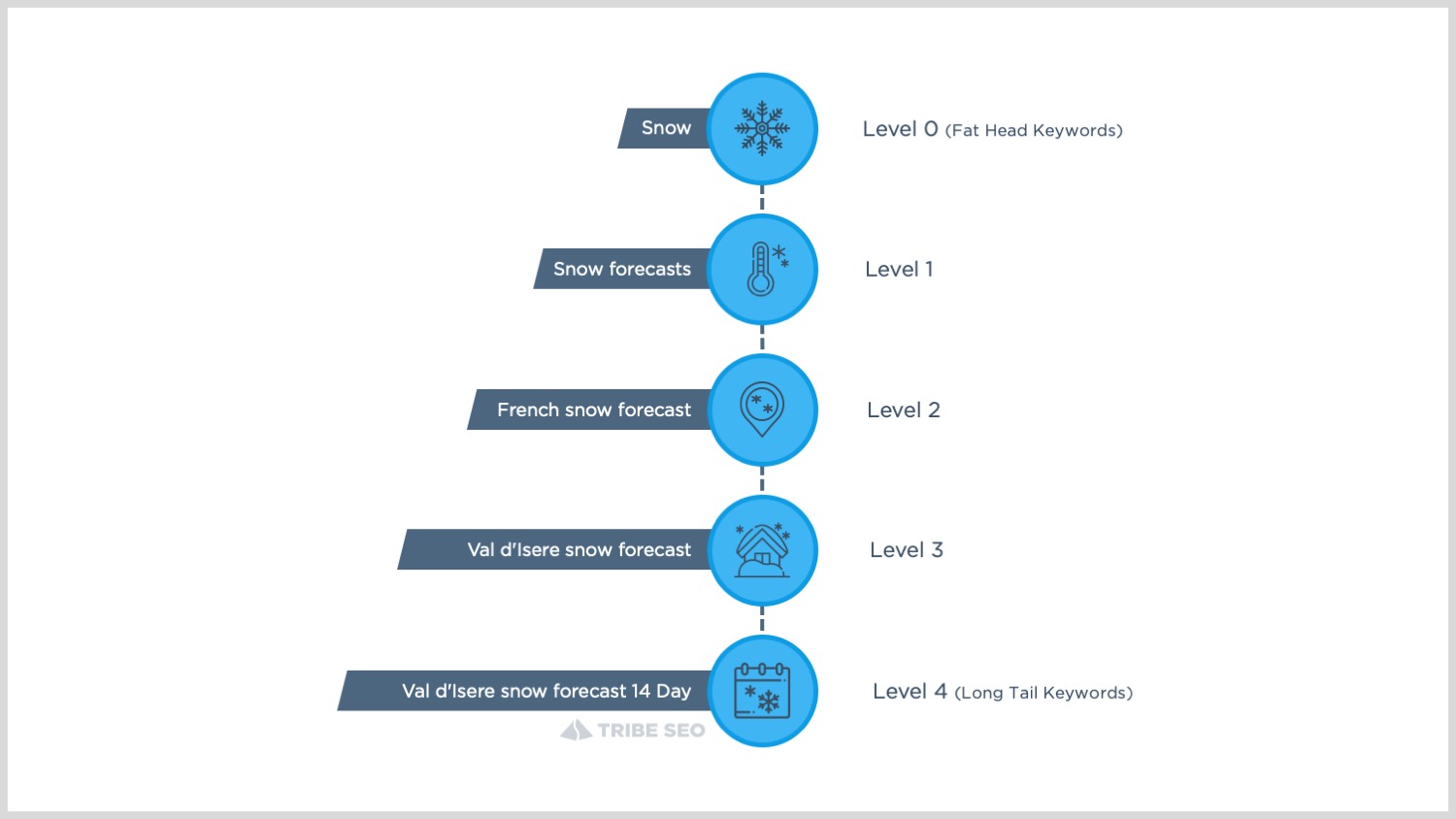
For example, if I take “French snow forecast” (from the one-wide example), I can apply the four-deep technique to drill down much further to “Val d’Isere snow forecast” or even “Val d’Isere snow forecast 14 Day”. Alternatively, I can go up the scale to something more generic like “snow forecasts”.
When you take a topical approach to backlink analysis and acquire a more varied and topical backlink profile, intelligent search engines like Google will start to connect the dots. This link building approach helps Google to see what you’re known for, giving your site a sense of authority – in a very natural way.
Why not try it and see if you can find fresh backlink opportunities by combing the four-deep and one-wide technique? Start with a keyword and go deeper … then pick a Level 2 or Level 3 keyword to widening out to other topics (both closely related and broadly related). You might find a whole bunch of opportunities that you’d otherwise have missed.
Designed, Built and Optimised by Joe the SEO
© Tribe SEO is a registered UK Company (# 07455058). Privacy Policy and Terms.
This site is protected by reCAPTCHA and the Google Privacy Policy and Terms of Service apply.